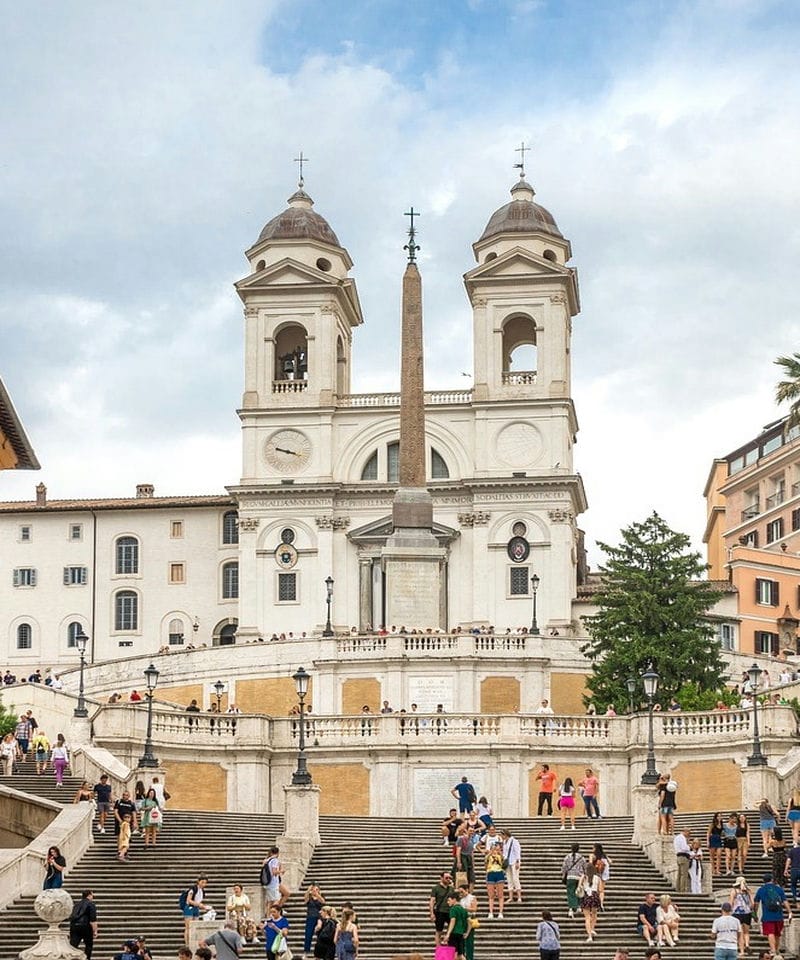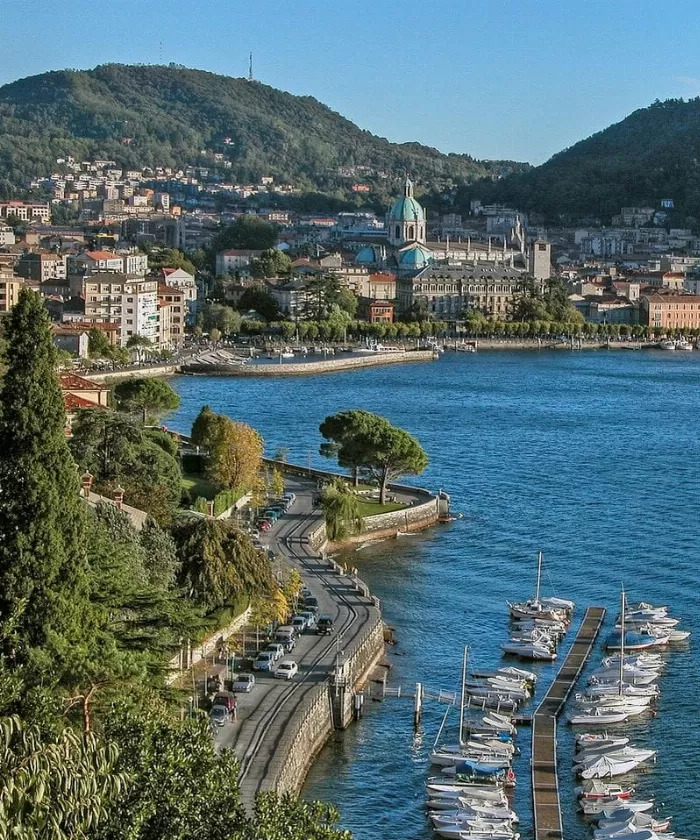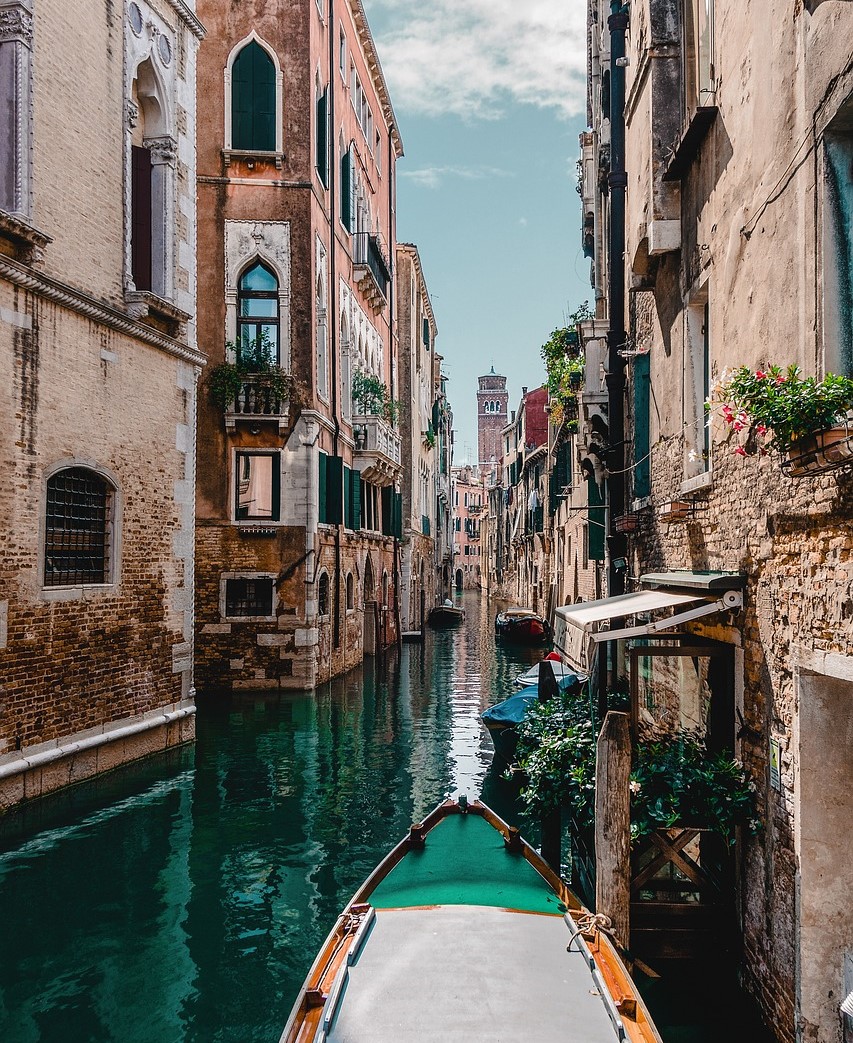
Venice Travel Guide: Essential Info and Tips
Key Takeaways
- No Venice travel guide is complete without the must-visit islands of Burano and Murano.
- Venice offers a unique blend of history, art, and canals.
- Top attractions include St. Mark's Basilica and gondola rides.
- Authentic Venetian cuisine adds flavor to the travel experience.

The charm of Venice lies in its unique blend of history, art, and the ever-present waterways that shape its landscape.
This floating city captivates travelers with its romantic atmosphere and rich cultural heritage.
Every corner tells a story, from the grandeur of St. Mark's Basilica to the intricate network of canals interwoven through the city.
Even a short stroll along its narrow streets can feel like stepping back in time.
Visitors are drawn to the allure of Venetian art and architecture, seeing masterpieces by Titian or Tintoretto in local museums and churches.
Beyond its famous landmarks, the city offers a slower pace, inviting tourists to wander its alleyways and discover hidden gems away from the crowds.
An exploration of Venice is incomplete without experiencing a gondola ride on the Grand Canal, providing a unique perspective of this remarkable city.
Local dining is an adventure in itself, offering authentic flavors from traditional Venice's cuisine.
Travelers can enjoy fresh seafood, risotto, and classic Venetian dishes in charming trattorias.
Each meal becomes a memorable experience, enriching the journey through this enchanting city.
History Of Venice, Italy

Venice, known for its rich culture and striking architecture, is steeped in a history spanning over a millennium.
From its formation amid turbulent times to its rise as a mighty maritime power, Venice's story is one of resilience and ingenuity.
Founding And Early History
Venice's origins trace back to around 400 A.D. when settlers fleeing invasions founded communities in the Venetian Lagoon.
These first Venetians faced a harsh environment, building on mud and sand. Initially part of the Roman Empire, these settlements grew as refugees sought safety from the mainland.
By the 9th century, Venice had started to organize as a unique entity.
Its strategic lagoon location offered natural protection, enabling it to remain independent.
This pivotal period laid the groundwork for what would become the Venetian Republic, known as La Serenissima, marking the beginning of its rise as a powerful city-state.
Venice As A Maritime Power
Throughout the Middle Ages, Venice emerged as a significant maritime force.
Controlling trade routes across the Adriatic Sea and Mediterranean, it flourished economically by trading spices, silk, and precious goods.
Venetian ships became iconic, and the city developed strong diplomatic and trade relations with empires like Byzantium and the Islamic world.
The powerful navy and savvy diplomacy led Venice to dominate key regions, including parts of Greece and the Dalmatian coast.
By the 13th century, it was a hub of commerce and culture, pivotal in spreading the Renaissance through Europe. This dominance solidified Venice’s status as a formidable force in the region.
Significant Historical Events
Venice faced several defining moments throughout its history.
In 1797, the Treaty of Campoformio transferred control from Venetian independence to Austrian rule under Napoleon’s influence. This ended over a millennium of autonomy.
Later, in 1866, Venice became part of the newly unified Kingdom of Italy, marking a new chapter in its long history.
The city's vibrant past also left a legacy of breathtaking art and architecture, seen today in its bridges, canals, and grand basilicas—a testament to its long-standing cultural importance.
Getting To Venice

Travelers can reach the Veneto region, and Venice in particular, through various modes of transportation, including flying, taking a train or bus, or arriving by car or boat.
Marco Polo International Airport serves as a major entry point, while Venice's unique location makes water taxis and vaporettos essential for getting around.
The city offers diverse options to cater to different preferences and needs.
Airports And Flights
Venice is served by Marco Polo International Airport, one of Italy's busiest.
Located just a few miles from the city, it handles numerous flights from across Europe and beyond.
Upon landing, travelers can take a bus to Piazzale Roma or choose water taxis for a scenic route into the heart of Venice.
An alternative Venice airport is Treviso, though it is further away.
Water taxis provide a direct and charming entry to Venice, but they are more expensive.
Vaporettos, or public water buses, offer an economical choice for those wishing to enjoy the Venetian waterways.
Train And Bus Options
Venice's Santa Lucia train station is a major hub connecting it to Italy and Europe.
High-speed trains make travel convenient and comfortable.
Arriving by train is often favored for its stress-free experience and beautiful views as the train crosses the lagoon.
For those opting for bus travel, Piazzale Roma serves as the primary terminal.
Buses from Marco Polo Airport to Piazzale Roma run frequently, making the journey quick and straightforward. From there, water taxis and vaporettos can take visitors further into Venice.
Arriving By Car Or Boat
Driving to Venice requires using the mainland roads and parking at places like Tronchetto Island.
Cars, vans, and campers can park here, although fees are higher. Visitors then have to take public transport as cars are not allowed in Venice itself.
Arriving by boat offers a unique entry.
Various cruise lines dock nearby, allowing passengers to step directly into Venice's watery embrace. Those with private boats can find suitable docking facilities, but it's essential to plan ahead due to limited spaces.
Water taxis can also be hired, providing a direct and sometimes luxurious path to a Venice hotel or landmark.
Where To Stay In Venice

Venice offers a variety of accommodation options to suit different preferences and budgets.
This guide to Venice will highlight the best neighborhoods for tourists, luxury hotels, and unique places to experience the city's charm.
Best Neighborhoods For Tourists
San Marco is a popular choice for visitors. This area is home to famous landmarks like St. Mark’s Basilica and the Doge’s Palace.
Staying here means easy access to these sites and many restaurants and shops.
Cannaregio is another excellent option, known for its vibrant atmosphere and the Jewish Ghetto. It offers a more local feel while still being close to major attractions.
Dorsoduro boasts a lively arts scene and is ideal for those interested in museums and galleries. Campo Santa Margherita in this area is a hub for nightlife and dining.
Top Attractions In Venice

Venice is a city rich with history, art, and stunning architecture. From the grandeur of St. Mark's Square to the colorful Murano and Burano Islands, each attraction offers something unique. Explore beautiful churches, world-renowned museums, and iconic canals.
St. Mark's Square (Piazza San Marco)
St. Mark's Square is the heart of Venice's social and cultural life. This vast open space is beautifully surrounded by grand buildings and hosts the iconic Campanile, a towering bell tower offering incredible views of the city.
The piazza is often filled with tourists and locals alike, making it a vibrant hub. At its edge, the historical Caffè Florian and Gran Caffè Quadri offer a taste of Venice's past.
St. Mark's Basilica
St. Mark's Basilica is a masterpiece of Italo-Byzantine architecture. Located at the eastern end of St. Mark's Square, the basilica dazzles with its golden mosaics and intricate facade.
Inside, visitors can admire the Pala d'Oro, an exquisite gold altarpiece adorned with precious gems. The church's horses, replicas of ancient Greek originals, watch over the square from above.
Doge's Palace
This Gothic masterpiece, known as Palazzo Ducale, once housed the Doge of Venice. Visitors can explore its opulent chambers and art-filled halls.
The ornate Bridge of Sighs, connecting the palace to the prison, offers poignant tales of Venice's history.
The Doge's Palace also showcases works by Tintoretto and other Venetian masters, making it a must-see for art lovers.
Rialto Bridge
The Rialto Bridge is one of Venice's most recognizable landmarks. it is located in the San Polo district.
Spanning the Grand Canal, this stone-arched bridge features shops along its covered walkway. Visitors can enjoy stunning views of the canal and surrounding architecture.
As the oldest bridge across the Grand Canal, it remains a bustling center for commerce and tourism.
Grand Canal
The Grand Canal is Venice's main waterway, curving through the city like a reverse ‘S’.
Lined with Renaissance and Gothic palaces, this busy artery offers a glimpse into Venice's opulent past.
Gondolas, private water taxis, buses, and private boats navigate its waters, providing a unique transport experience. The Grand Canal links key points like the Rialto Bridge and St. Mark's Square.
Murano And Burano Islands
Murano is famous for its artisanal glassmaking, while Burano is known for brightly-colored houses and delicate lace.
Visitors can tour glass factories in Murano or visit the Museo del Vetro to learn about this ancient craft. In Burano, charming streets and a laid-back atmosphere invite exploration.
Gallerie dell'Accademia
This museum hosts an impressive collection of Venetian paintings from artists like Bellini and Tintoretto.
Located along the Grand Canal, the Gallerie dell'Accademia showcases Venetian art from the 14th to 18th centuries.
Art enthusiasts can explore works that capture Venice’s rich history and cultural heritage.
Peggy Guggenheim Collection
The Peggy Guggenheim Collection is housed in a historic palazzo along the Grand Canal. This museum focuses on 20th-century European and American art.
Visitors can enjoy works by artists such as Jackson Pollock, Picasso, and Dalí. The museum’s sculpture gardens add another layer of experience to this esteemed collection.
Campanile di San Marco
Rising above St. Mark's Square, the Campanile di San Marco offers panoramic views of Venice. As the tallest structure in Venice, it serves as both a landmark and a functional bell tower.
Visitors can ride an elevator to the top for sweeping vistas of the city’s picturesque canals, red-roofed buildings, and out to the lagoon.
Santa Maria Della Salute
This striking baroque church stands at the entrance to the Grand Canal. Built to commemorate the end of a devastating plague, Santa Maria Della Salute is an iconic part of the Venetian skyline.
Inside, visitors find spectacular altars and paintings, including works by Titian. Its octagonal design and domes symbolize gratitude, making it a beautiful place of reflection.
Best Activities In Venice

Venice offers unique experiences from its serene gondola rides through famous canals to witnessing local festivals rich in tradition.
Whether navigating on a vaporetto or exploring hidden waterways, Venice provides unforgettable sights.
Shopping for traditional Venetian masks and colorful glassware offers a takeaway of its artisan culture.
Gondola Rides
The iconic gondola ride offers a classic Venice experience. Floating along the Grand Canal, visitors witness historic buildings and bridges.
Gondoliers often share local stories or sing traditional songs, adding a personal touch.
It's ideal for romantic outings, providing picturesque views and relaxed exploration. Gondola rides offer a glimpse into the city's rich past and charming architecture.
Vaporetto Rides
Venice's water buses, or vaporettos, provide an affordable way to sightsee. They navigate major canals, offering stops at notable sites like St. Mark’s Square.
Unlike gondolas, vaporettos also connect to nearby islands, like Murano and Burano, famous for glassmaking and colorful houses respectively.
It’s a practical way to experience the city's beauty and daily life along the waterways.
Exploring Hidden Canals
Beyond popular tourist routes lie Venice’s hidden canals. Smaller, quieter waterways present an intimate look at everyday Venetian life.
Strolling over quaint bridges and past less-crowded cafes reveals architectural details missed on main routes.
These quiet canals provide a peaceful escape and a chance to observe the city's more residential areas and authentic charm.
Attending Local Festivals
Venice hosts vibrant events like the Venice Carnival (Carnevale) and the Biennale art exhibition.
Carnevale features elaborate costumes and lively street performances. The Biennale showcases international art, music, and cinema.
Each festival highlights Venice’s artistic and cultural heritage, offering visitors a rich mix of entertainment and tradition, reflecting the city's creative spirit.
Shopping For Venetian Masks And Glass
Venice is renowned for its Venetian masks and intricate glasswork.
Shops display masks used in the Carnival, each detailed with colors and designs.
Visitors can watch artisans craft these masks or delicate glass pieces, witnessing time-honored skills.
These items serve as memorable souvenirs, celebrating Venice's artisanal history and its influence on art and culture.
Dining In Venice

Venice offers a rich dining scene with authentic Venetian dishes, charming restaurants, and bustling markets.
Explore traditional cuisine like risotto and seafood, enjoy dining experiences from casual cafes to fine dining, savor quick bites at street food stalls, and unwind at wine and cicchetti bars.
Traditional Venetian Cuisine
Traditional Venetian cuisine is a delectable journey through flavors inspired by the sea.
Seafood risotto, often prepared with cuttlefish ink, is a local favorite. Sarde in saor combines sweet and sour flavors with marinated sardines.
Popular pasta options include bigoli, served with salty anchovy sauce.
Venetian meals often end with delightful desserts like baicoli and rich tiramisu.
Vegetables, typically artichokes and asparagus, feature prominently in many dishes, reflecting the city's Mediterranean influence. These authentic flavors are a testament to Venice's rich culinary heritage.
Best Restaurants And Cafes
Venice is home to many renowned restaurants and cafes, offering diverse dining experiences.
Trattoria al Gatto Nero, located on Burano, is famous for its fresh seafood and risotto di gò.
For a blend of luxury and history, visitors flock to Locanda Cipriani on Torcello island.
Bar Longhi, with its exquisite views of the Grand Canal, promises a lavish aperitivo experience.
Each venue is a mix of tradition and innovation, making Venice an exciting food destination.
Dining in these places is enhanced by the backdrop of traditional decor like Murano glass and Venetian masks, adding to the ambiance.
Street Food And Markets
Venice's street food offers tasty and affordable options, with must-try bites found throughout the city.
Street vendors serve fried seafood cones and creamy polenta.
The bustling Rialto Market is a vibrant hub for fresh produce, fish, and seafood.
It's a perfect spot to sample local flavors while capturing the daily life of Venetians.
Located near iconic attractions, the market offers visitors a chance to buy fresh ingredients or enjoy local snacks amid busy stalls. For those seeking souvenirs, the mix of food and colorful stalls is captivating.
Wine And Cicchetti Bars
Wine and cicchetti bars are integral to Venice's food culture.
These bàcari bars serve small plates, perfect with a glass of local wine or prosecco.
Parents and friends gather for aperitivo at popular spots like Bar Longhi, where cicchetti such as crostini topped with fresh tuna or baccalà mantecato are enjoyed.
These bars, scattered throughout Venice, offer a cozy atmosphere and a glimpse of everyday Venetian life, blending tradition with casual indulgence. Visitors should explore different bar options to ensure a memorable tasting experience.
Day Trips From Venice

Venice serves as a gateway to amazing destinations. Each offers unique experiences, from historical sites to scenic beauty. These trips invite you to explore Italy's rich culture and landscapes.
Verona
Verona is known for its Roman amphitheater, which hosts opera performances.
A visit to Juliet's House evokes the spirit of Shakespeare's "Romeo and Juliet." The medieval architecture, like the stunning Piazza delle Erbe, blends history with vibrant city life.
Traveling from Venice to Verona is easy, with direct trains taking about 1 hour and 10 minutes.
Enjoy the charming streets and beautiful bridges while exploring this lovely city. For a unique experience, try a walking tour to see Verona’s hidden gems.
Padua
Padua combines ancient history with modern vibrancy. The Scrovegni Chapel is famous for its frescoes by Giotto.
Visit the Basilica of Saint Anthony for its artwork and serene atmosphere. Outdoor enthusiasts will appreciate the picturesque gardens and squares.
Just a 30-minute train ride from Venice, Padua feels like stepping into a different world.
Wander through the Prato della Valle, one of the largest squares in Europe.
Discover local cuisine at traditional cafes and markets, enriching your Italian travel experience.
Vicenza
Vicenza, renowned for Andrea Palladio's architecture, is a UNESCO World Heritage Site.
The Basilica Palladiana and Teatro Olimpico are architectural masterpieces worth exploring.
Art and history enthusiasts will find endless inspiration in this charming town.
Accessible by a 44-minute train ride from Venice, Vicenza offers a blend of culture and relaxation.
Enjoy a leisurely lunch in the central square and immerse yourself in the town’s beauty.
The lively Piazzetta Palladio hosts local events and provides insight into Italian community life.
Practical Tips For Visiting Venice

Planning a trip to Venice involves understanding the best time to visit, how to navigate the city effectively, ensuring safety, and making the most of your budget.
These tips help enhance your experience in the city known for its stunning architecture and unique waterways.
Best Time To Visit
The months of October, November, January, March, and April are excellent times to visit Venice.
During these periods, visitors can enjoy fewer crowds and reduced wait times at popular attractions. The weather is generally mild, offering a pleasant backdrop for exploring the city.
In these off-peak months, visitors can get a more authentic experience.
This timing also sidesteps the high tides known as acqua alta, which can lead to flooding in autumn and winter.
Travelers should check local weather forecasts and tidal conditions before their trip.
Navigating The City
Getting around Venice is easiest via vaporetto, the public water bus system that traverses the city's canals.
A Vaporetto Pass is a practical investment, offering unlimited travel for a set period.
This is especially useful as the city’s narrow, winding streets can be challenging to explore on foot.
It's important to remember that cars and bicycles are not allowed in the city, so comfort with walking is essential.
Gondola rides provide a scenic alternative, though they are more expensive.
Travelers should also download a map or navigation app to avoid getting lost in the charming labyrinth of streets and canals.
Safety Tips
- Venice is generally a safe city, but travelers should stay aware in crowded areas to avoid pickpockets.
- Keeping personal belongings secure and avoiding displaying valuables is advised.
- During acqua alta, platforms are set up for walking on flooded streets.
- Pay attention to signs and local announcements to stay informed about any closures or safety hazards.
- Emergency numbers and the location of the nearest police stations should be noted.
Money-Saving Advice
Tourists can save money by dining where locals eat, as tourist spots are usually more expensive.
Cicchetti bars, serving small Venetian snacks and affordable drinks, offer an excellent taste of local cuisine without breaking the bank.
Purchasing museum and attraction passes can reduce costs while bringing added convenience.
These often include discounted entry fees and sometimes skip-the-line privileges.
Additionally, drinking tap water here is free at fountains around the city, so carrying a refillable bottle helps save on bottled water.
Final Thoughts

Venice is a city of extraordinary beauty, known for its intricate canals and rich history. It invites travelers to explore its unique blend of architecture and culture.
Visitors can marvel at landmarks like St. Mark's Basilica and the Grand Canal. These iconic sites offer a glimpse into Venice's storied past.
A trip to Venice isn't complete without enjoying a traditional gondola ride. This offers a peaceful view of the city's waterways.
With its captivating scenery and timeless charm, Venice remains a top destination for travelers around the world.












